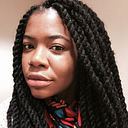Member-only story
How Vulnerability Has Impacted My 2020 Job Search
Moving from anecdotes to data points
Earlier this summer I wrote about my return to the US following time spent living in Bali — enjoying my peace, taking the time for myself, and being clear on what I wanted to achieve with my full-time employment (FTE) job search. In that article, I mentioned that I hoped by mid-August I’d be writing about my experience with a new role at a company that accepted me as I am. Unfortunately, that hope has not turned into reality…yet.
In June 2020—by stepping into vulnerability and asking for help—I began to share weekly updates on LinkedIn to mostly keep myself motivated and have an account of what I was doing to improve my job situation. When I wrote about the 6 steps on how I apply for a job as a Black woman, I knew that my path with my job search wouldn’t be easy — I just didn’t imagine it would be as rough as it has been. To ensure I could speak from a factual position rather than solely anecdotal, I started to input some of my applications since March 2020 into a spreadsheet. Throughout my career, I’d always tracked my applications, by month, and color coded saved job descriptions to indicate statuses such as interviewed, no response, offer, and the like. However, this time I went deeper.
